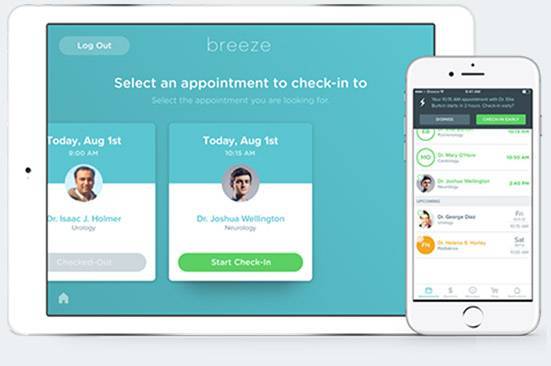Healthcare has always adapted to keep up with the increasing patient demands and new technology. Ambient listening technology has most likely been one of the most significant technical developments in healthcare settings in recent years. This technology enables physicians, nurses, and other healthcare personnel to spend less time doing administrative tasks and more time interacting with patients.
Here, we’ll discuss ambient listening in healthcare, how it works, the benefits of utilizing it, how it combines with AI clinical documentation, and why hospitals and clinics use it so much. We will also discuss the ambient medical definition in detail and assess how this technology is influencing the future of healthcare modernization.
What is Ambient Listening in Healthcare
Ambient listening in health care is the application of intelligent devices and artificial intelligence systems that passively listen during patient-provider interactions. The technology aims to record and document clinical conversations without having to take notes manually.
Ambient listening technology employs microphones and artificial intelligence-based software to monitor natural speech silently. It neither disrupts nor disturbs the patient or the clinician. When the conversation is recorded, the system picks out informative content, including symptoms, treatment plans, histories, and subsequently organizes it into a clinician-ready structured clinical document.
This entire process happens in real time or shortly after the interaction is complete. It helps create accurate and consistent patient records, which are essential for quality healthcare delivery.
Ambient Medical: A Quick Overview
Ambient is a term used to define the surrounding environment. In healthcare, ambient medical technology pertains to technology that runs in the background without user interaction. It does not need manual input or operation and runs quietly within the clinical space.
Simply put, ambient listening technology in healthcare refers to equipment that “listens” and interprets data from clinical discussions without being seen or noticed. It works well with electronic health record (EHR) systems and assists without altering the natural course of work for healthcare professionals.
This contrasts with conventional speech-to-text technology, which typically needs to be used actively. Ambient systems are more intelligent and less active. They are context-aware and capture only relevant clinical data.
How Does Ambient Listening Technology Work?
Ambient listening systems are designed to fit naturally into healthcare settings. They usually consist of three main components:
1. Microphones or Smart Devices:
These devices are usually compact and are installed in examination rooms, consultation rooms, or any area where the patient and healthcare provider interact. They are designed to be discreet, so they do not interfere with the natural flow of conversation.
When the consultation begins, these devices capture the audio in real-time. They record all the time in the background and capture the entire conversation between the patient and provider. This live audio recording is vital because it ensures no essential information is excluded from the discussion. The recordings are then transferred to AI software safely for analysis and documentation.
2. AI-Powered Software:
Once the audio is captured, it is processed by complex software that employs artificial intelligence and natural language processing. The software thoroughly scans the entire conversation and omits unimportant aspects of the talk that are not suitable for use in clinical documentation, such as small talk or undesirable comments.
It is programmed to identify major medical factors like symptoms presented by the patient, diagnoses declared by the physician, medications prescribed, treatment plans, and follow-up. The system is maximized with high amounts of data from the medical field to be able to recognize complex medical jargon and understand the context in which certain words are expressed. Drawing only the most salient clinical information, the program produces a tidy and readable rendition of the patient encounter that can be placed directly into the medical record.
3. Integration with EHRs:
After processing the audio with the AI software, it condenses the information pertinent to medicine and subsequently organizes it in a clear and well-structured clinical note. It includes the patient’s history, symptoms, diagnosis, treatment plan, and follow-up details. The system itself enters this note into the patient’s electronic health record (EHR) without needing the provider to type or dictate anything manually.
This automated blending guarantees that all the documents are up to date, organized, and easily accessible during subsequent visits. This also reduces errors due to manual data entry and helps in maintaining accurate records for better patient care.
The Role of AI Clinical Documentation
AI-powered clinical documentation is one of the most significant applications of ambient listening in healthcare. Traditional documentation methods are time-consuming and prone to errors. Physicians often spend hours updating medical records, leading to fatigue and reducing the time they can devote to direct patient care.
AI Clinical Documentation solves this issue by automating the process. Using ambient listening technology, it creates complete and accurate notes without requiring the clinician to type or dictate manually.
This helps in:
- Reducing physician burnout
- Improving documentation accuracy
- Increasing the time doctors can spend with patients
- Enhancing overall patient satisfaction
Because these systems are trained on vast amounts of medical data, they can recognize patterns and accurately extract information. Many systems also allow providers to review, edit, and approve the notes before they are finalized, ensuring control and accountability.
Benefits of Ambient Listening in Healthcare
Ambient listening offers several benefits to both patients and providers. Below are some of the key advantages:
1. Improved Efficiency
Physicians save a few hours weekly by implementing ambient listening devices that automate record documentation. Physicians can use these devices to generate precise clinical records in real time rather than waiting and typing out notes after every patient visit or at the end of the day.
The time savings enable doctors to attend to more patients within a day without losing their sanity. It also allows for valuable time devoted to other pressing activities like reading complicated cases, attending training sessions, catching up on medical research, or taking well-deserved breaks. By enhancing daily workflow, ambient listening technology improves healthcare delivery and provider wellness.
2. Better Patient Experience
When physicians are not distracted by typing on keyboards or using tablets during visits, they can devote their whole focus to the patient sitting in front of them. This allows for more authentic, down-to-earth talks in which the physician may maintain eye contact, listen intently, and reply wisely.
Patients feel more heard, appreciated, and respected when their healthcare professional offers them their full attention. This sense of familiarity creates trust, and a trusting relationship is the foundation of increased patient satisfaction and communication.
3. Higher Quality Documentation
With AI Clinical Documentation, the visiting notes produced from patient encounters are more comprehensive, organized, and accurate than those made through traditional processes. The AI system collects pertinent information that can be missed or forgotten when documentation is completed post-appointment.
These include discrete symptoms, time frames, medical jargon, and the provider’s conclusions and recommendations. Precise documentation reduces errors, decreases the risk of misdiagnosis, and facilitates improved clinical decisions. It also plays a vital role in ensuring continuity of care, particularly when more than one provider cares for a patient.
4. Lower Administrative Burden
Healthcare providers are typically responsible for filling out lengthy documentation on each patient’s encounter. This encompasses documenting medical history, physical examination results, treatment plans, medications, and follow-up details.
These tasks, critical as they might be, take up a big chunk of a practitioner’s time and add to their aggregate burden. Over time, this administrative work can increase tension, fatigue, and the possibility of errors. Ambient listening technologies release this burden by collecting and documenting pertinent clinical information during the encounter.
5. Faster Decision-Making
Properly documented and accurate patient records are essential for good clinical decision-making. With easy access to clear and complete information like symptoms, prior diagnoses, lab results, medications, and outcomes of treatment, health professionals can make a patient’s condition assessment quickly and more confidently.
This is especially important when addressing complex medical conditions or long-term chronic diseases, where one detail can be the difference in the course of treatment. Ambient listening systems help ensure that none of the crucial information is lost or noted incorrectly by capturing the complete context of clinical conversation.
Use Cases in Healthcare Settings
Ambient listening technology is being used across different healthcare settings, including:
- Primary Care Clinics: Doctors use them to quickly create visit summaries and treatment plans.
- Specialty Practices: In fields like dermatology, cardiology, and psychiatry, it helps record detailed patient histories.
- Emergency Rooms: Real-time documentation helps with faster triage and patient tracking.
- Telehealth: Ambient systems can also be used during virtual consultations to capture and transcribe patient interactions.
Is Ambient Listening Secure in Healthcare?
One of the main concerns with ambient listening in healthcare is patient privacy. These systems must follow strict rules under the Health Insurance Portability and Accountability Act (HIPAA). Reputable providers of ambient listening technology use encryption, access controls, and secure data storage to protect sensitive information.
The data is usually stored in cloud environments that meet healthcare compliance standards. Providers also have the option to review and delete transcripts if needed. Transparency is key; patients are usually informed that the system is being used during consultations.
Challenges and Limitations
While ambient listening in healthcare has many benefits, it also comes with some challenges:
- Background Noise: Hospitals can be noisy. Too much background noise can affect audio quality and reduce accuracy.
- Language and Accents: AI systems may struggle with different accents or non-native speakers.
- Technical Integration: Not all EHR systems support seamless integration with ambient tools.
- Cost: The setup can be expensive for small clinics, but prices decrease as technology becomes more widespread.
Despite these challenges, ambient listening technology’s overall value continues to grow. Improvements in AI models are addressing many of their current limitations.
The Future of Ambient Listening in Healthcare
As more healthcare providers look for ways to improve efficiency and patient care, the demand for ambient listening tools is expected to increase. Here are some trends to watch:
- More innovative AI Models: With ongoing research, AI systems will better understand complex medical language and context.
- Wider Adoption: More clinics, hospitals, and telehealth providers will begin to adopt ambient listening.
- Patient-Facing Features: Some systems may begin offering summaries directly to patients to increase transparency and engagement.
- Integration with Wearables: Future systems might also collect ambient data from wearable devices to offer real-time health insights.
The path forward will likely involve collaboration between healthcare providers, AI companies, and policymakers to ensure ambient listening is safe, effective, and accessible.
Closing Note
Ambient listening in healthcare is transforming clinical documentation. By combining smart devices with AI, providers can spend more time with patients and less time at their desks. As this technology continues to evolve, it will likely become a standard part of healthcare delivery worldwide.
Adopting ambient listening technology and investing in AI clinical documentation systems is a step in the right direction for clinics and hospitals that want to stay ahead. It improves efficiency and supports better patient outcomes and higher-quality care.




